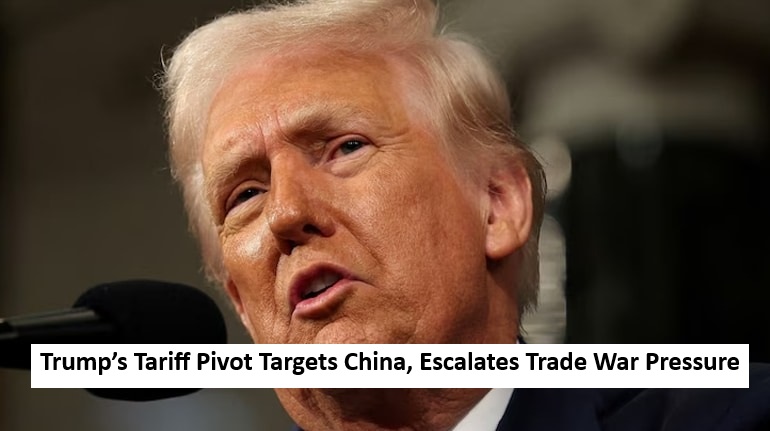
The United States has significantly raised tariffs on Chinese imports, now at a record 125%, while pausing tariffs for other nations. This move signals a strategic focus on isolating China amid the ongoing trade conflict. The decision was followed by a major rally in U.S. stocks but led to a drop in China’s onshore yuan to its weakest level since 2007.
Selective Tariff Pause Benefits US Allies
Countries like Japan, Vietnam, South Korea, and India received a temporary suspension from increased tariffs. This shift shows Washington’s effort to unite allies in a collective stance against Beijing, with Treasury Secretary Scott Bessent stating that the U.S. plans to deal with China as a group after aligning with economic allies.
Economic Impact on China
Goldman Sachs downgraded China’s 2025 GDP growth forecast from 4.5% to 4% due to the impact of increased U.S. tariffs. Analysts suggest this could hurt China’s export-reliant sectors and further slow the country’s recovery from deflation trends.
Beijing’s Pushback and Retaliation
China has responded with matching tariffs of 84% on U.S. imports. It also blacklisted major U.S. defense firms and warned citizens against travel to the United States. Chinese leadership has shown no sign of initiating talks, as President Xi Jinping’s administration holds firm on the need for “mutual respect” before negotiations.
Military and Strategic Ramifications
Beyond trade, tensions have spilled into military concerns. The U.S. criticized China’s growing global military presence, particularly in the Western Hemisphere. Defense Secretary Pete Hegseth emphasized the need to reinforce deterrence in Asia and support allies against Chinese influence.
China Strengthens Regional Ties
China has turned to Europe and Southeast Asia to counterbalance its strained relationship with the U.S. Xi Jinping chaired a key regional diplomacy conference while China’s commerce minister encouraged deeper trade with the EU, aiming to boost stability in global trade relations.
Beijing’s Domestic Economic Measures
In response to trade pressure, China is preparing additional economic stimulus. Leaders are meeting to discuss measures to offset tariff impacts, including boosting domestic demand and urging exporters to sell within China. Local governments like Fujian province are taking steps to redirect goods into the domestic market.
Signs of Tariff Strategy Fatigue
Despite the harsh rhetoric, Trump indicated he may not raise tariffs further. Economists note diminishing returns: the first 50% tariff cut GDP by 1.5 points, but a second round only by 0.9 points. Analysts believe China is prepared to weather the tariffs and wait for U.S. political shifts.
Read More: Pakistan and Afghanistan Border Tensions Flare Up with Night Long Heavy Firing

 Share
Share



